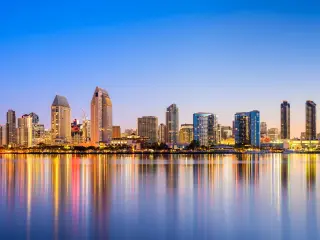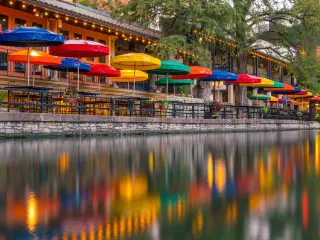An Epic San Diego to Houston Road Trip
It's time to plan the ultimate drive from the Pacific Coast to the Gulf of Mexico. This road trip from San Diego to Houston will take you through beautiful desert cities with quintessential Arizona cacti as their backdrop, otherworldly national parks, quirky towns near the Mexican border, and colorful Texan cities.
You can do this 1,540-mile road trip from San Diego to Houston in 22 hours and 20 minutes. Highlights on the way are Yuma, Tucson, Organ Pipe Cactus National Monument, Coronado National Forest, Las Cruces, El Paso, Marfa, Alpine, and San Antonio.
This amazing drive from San Diego to Houston will be one for the books with so many new places to discover. Read on to learn more about the best routes, where to stop along the way, the best time to travel, and the best things to see and do along the way.
Where is Houston and how far is a road trip from San Diego?
Setting off on a road trip from San Diego to Houston offers an amazing adventure through beautiful American landscapes. You'll drive from the sunny beaches of Southern California to the heart of Texas, known for its many museums and views of the Gulf Coast.
We have curated two great routes to choose from; San Antonio Route and Austin Route. These routes follow the same directions for parts and then will diverge and take you to different attractions and landmarks.
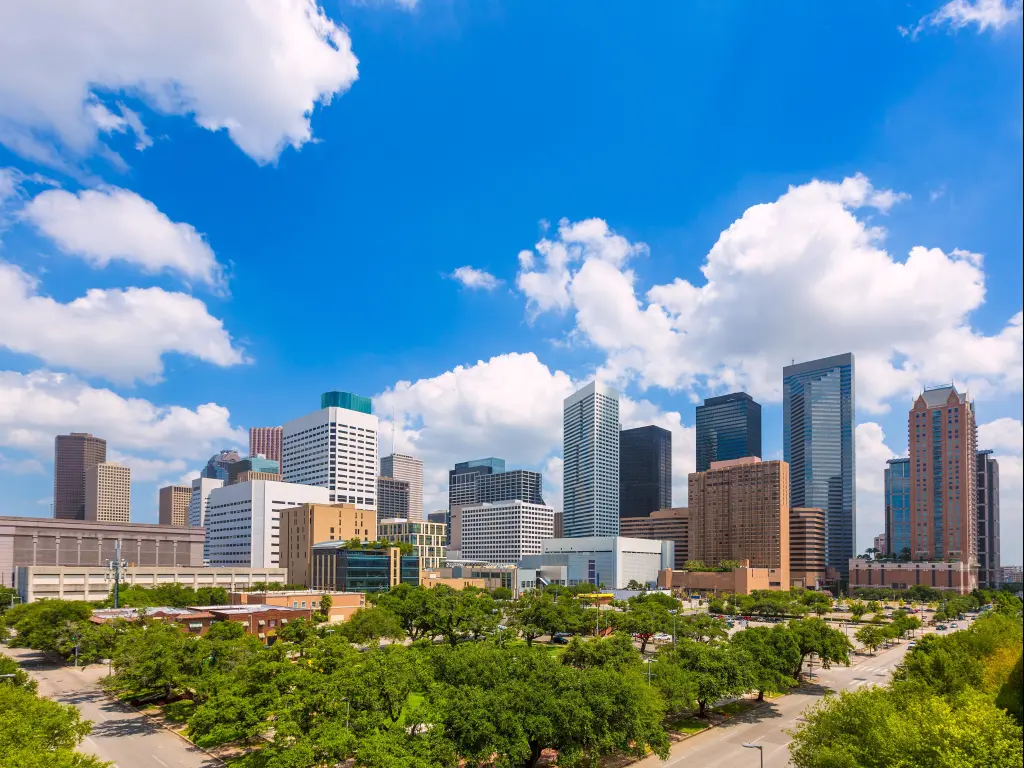
The San Antonio Route will guide you through historic landmarks, sprawling national forests, and quaint towns. Meanwhile, the Austin Route takes you through desert landscapes, iconic national parks, and the art and music of Austin.
The San Antonio Route stretches approximately 1,540 miles, and the Austin Route covers around 1,570 miles.
To get the most out of both routes, we recommend dedicating 5-6 days for the San Antonio Route or 6-7 days for the Austin Route. This way, you'll be able to take your time exploring the expansive and ever-changing landscapes and unforgettable destinations along the way.
How long is the road trip from San Diego to Houston, and how many days will it take?
| Route | Distance | Driving Time | Recommended Days |
|---|---|---|---|
| San Antonio Route | 1,540 miles | 22 hours 20 minutes | 5-6 Days |
| Austin Route | 1,570 miles | 24 hours | 6-7 Days |
What is the best road trip route from San Diego to Houston?
There is no best route for a road trip from San Diego to Houston. That being said, this is how our two routes stack up against each other, looking at some factors that might influence your decision.
| San Antonio Route | Austin Route | |
|---|---|---|
| Easy Driving | ⭐️⭐️⭐️⭐️ | ⭐️⭐️⭐️⭐️ |
| Scenery | ⭐️⭐️⭐️⭐️ | ⭐️⭐️⭐️⭐️⭐️ |
| Facilities | ⭐️⭐️⭐️ | ⭐️⭐️⭐️ |
| Things to do | ⭐️⭐️⭐️⭐️ | ⭐️⭐️⭐️⭐️ |
| Traffic Flow | ⭐️⭐️⭐️⭐️ | ⭐️⭐️⭐️⭐️ |
Driving from San Diego to Houston via San Antonio
On the San Antonio Route, you'll drive through historic towns and vast landscapes full of cultural destinations. The route is predominantly on interstate highways and state roads, ensuring a smooth drive with well-maintained roads and clear signage.
As you drive, the scenery transitions from the coast to the rugged desert landscapes, with the artistic towns and vast natural areas along the way. You will also get the opportunity to make a detour to Big Bend National Park on this route.
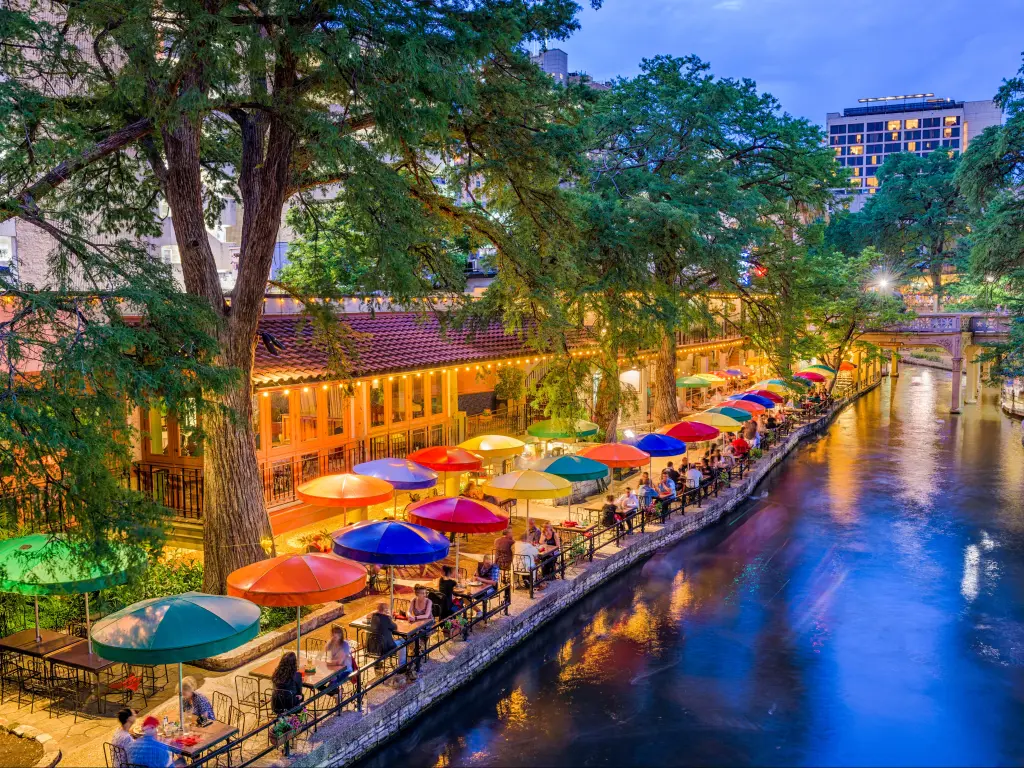
Cities like Tucson, El Paso, and Houston dot the route, offering amenities, from dining and lodging to fuel. While urban centers are well-equipped, the journey also traverses more remote stretches where planning for resources becomes essential.
From the natural beauty of the Coronado National Forest to the unique art installations in Marfa, each stop introduces its own set of experiences.
Traffic flow is smooth, particularly in rural areas. However, the major cities along the route can lead to congestion, especially during peak times.
Driving from San Diego to Houston via Austin
On the Austin Route, you'll drive through some of America's famously expansive landscapes, merging natural wonders with the vibrant energy of the cities along the way. Well-maintained highways and scenic byways, with clear signage, make for an enjoyable drive.
However, services become sparse near national parks and some highways. While cities along the way provide ample facilities, including dining, lodging, and fuel, be prepared for more secluded sections.
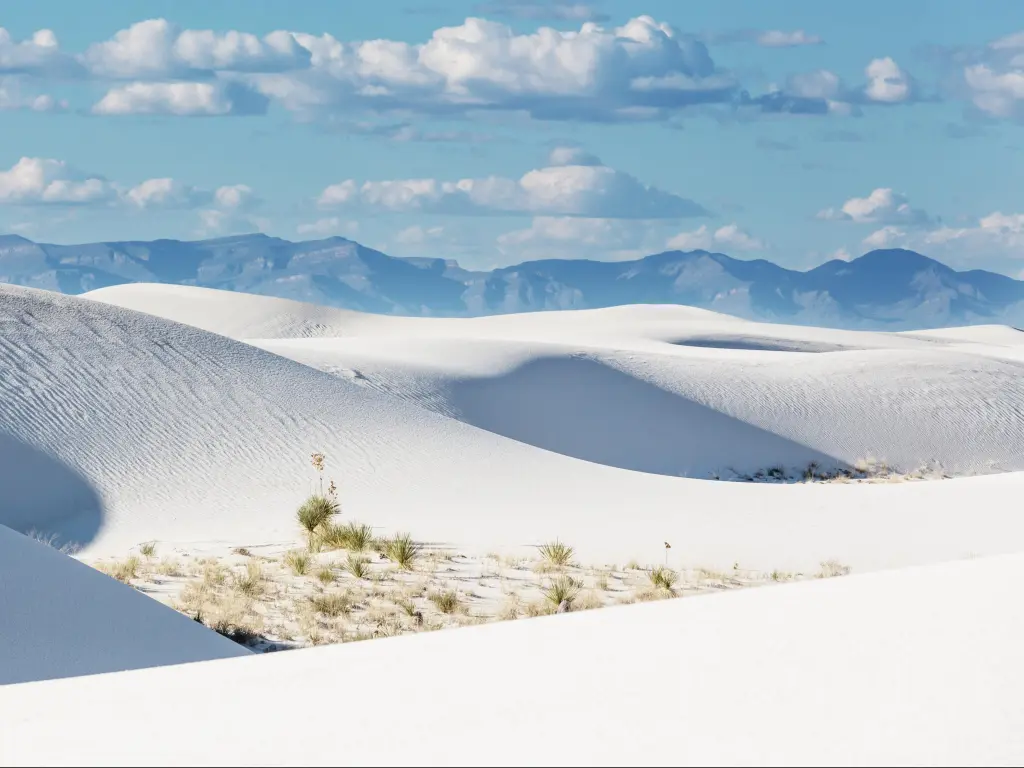
If you love nature, you'll love destinations like White Sands and Carlsbad Caverns National Parks. Austin's lively music scene, restaurant scene, and cultural offerings provide nonstop fun. The final stretch to Houston continues the trend, with attractions ranging from space exploration to the arts.
Traffic is mostly smooth until you get to Austin and as you enter Houston. Avoiding rush hours and major events can enhance your driving experience.
Driving Route from San Diego to Houston
To help you plan your incredible journey, we've included what to expect on your drive from San Diego to Houston. However, it is always a good idea to use GPS for step-by-step instructions.
Driving the San Antonio Route
From San Diego, head out on Interstate 8 (I-8) East. Your journey begins with the coastal vibes of San Diego transitioning into the beautiful desert.
You'll approach the outskirts of Cleveland National Forest, which offers scenic views and hiking opportunities. Continuing east, you'll reach Tucson via I-10 East. Don't miss the opportunity to drive to Saguaro National Park, which showcases the iconic cacti of the Arizona desert.
Proceeding eastward on the interstate, you'll make your way to El Paso, Texas. The colorful city features attractions such as the Franklin Mountains State Park and the El Paso Museum of Art.
The route then veers southeast onto US-90 East towards Marfa, known for its contemporary art installations and the mysterious Marfa lights.
Finally, from Marfa, continue on to Alpine and then Fort Stockton for the long stretch towards San Antonio. This part of your journey takes you through the heart of Texas, with opportunities to make detours to the Hill Country before reaching Houston.
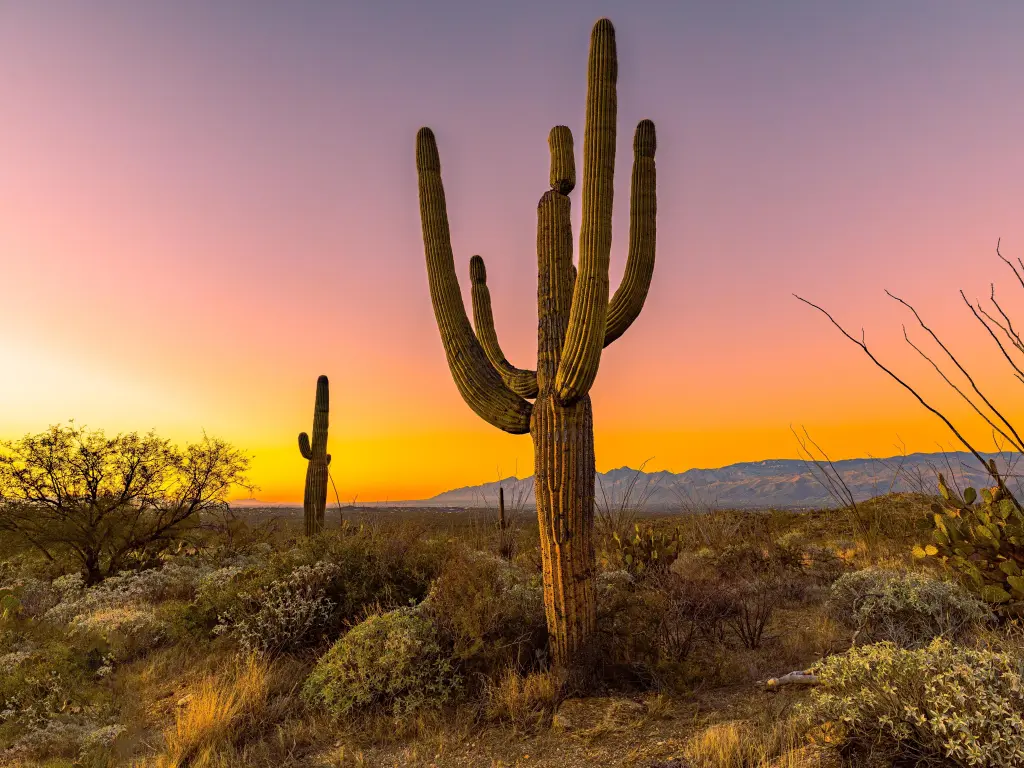
Driving the Austin Route
From San Diego, begin your journey on I-8 East similarly to the route above. This initial stretch leads you toward the New Mexico border. As you enter the state, take a turn northward towards Lordsburg, NM, via smaller state highways.
Continue your adventure eastward, heading towards White Sands National Park past Las Cruces. The journey to White Sands is a highlight, with its strikingly white gypsum dunes that make the park a natural wonder.
Next, the route takes you further into New Mexico, towards Carlsbad Caverns National Park. The drive through southeastern New Mexico is dotted with small towns and scenic vistas.
From Carlsbad, you'll head towards Austin, known for its lively music scene, exquisite cuisine, and rich cultural heritage, which provides countless activities and attractions. Finally, from Austin, make your way to Houston, concluding your beautiful drive.
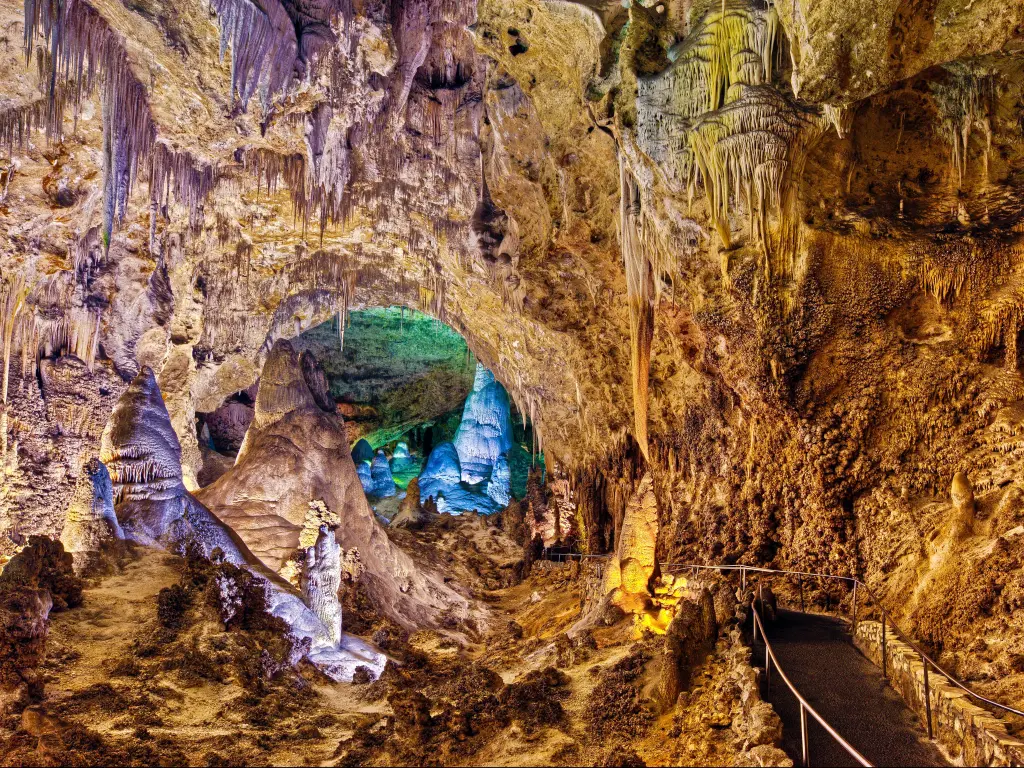
Where to stop overnight on a road trip between San Diego and Houston
With so much to see and do on either route on this San Diego to Houston road trip, you'll want to stop at one of these exciting stops along the way. With so much mileage to cover, we recommend taking as many breaks as your schedule allows you to.
Chasing after the mysterious lights in Marfa
As you journey along the San Antonio Route, a stopover in Marfa features a blend of contemporary art and attractions. This small desert city, located 13 hours and 45 minutes into the route, has become an iconic destination for art enthusiasts and those seeking an off-the-beaten-path adventure.
Among its most popular attractions is the Chinati Foundation, an internationally acclaimed contemporary art museum founded by artist Donald Judd. The museum is famous for its large-scale installations and minimalist art.
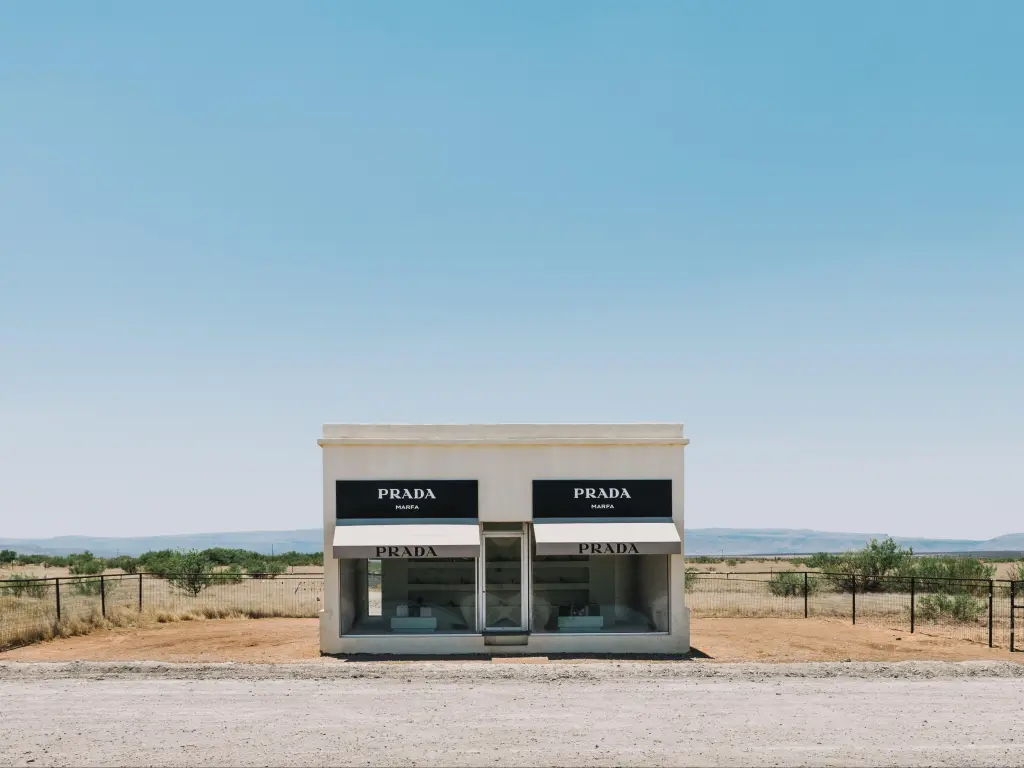
Another must-visit landmark is the mysterious Marfa Lights Viewing Area, where, if you are lucky, you can witness unexplained lights that dance on the horizon after sunset.
While in Marfa, our favorite place to stay is Hotel Saint George. This historic hotel first opened in 1886 and reimagined by the acclaimed Carlos Jimenez Studio, seamlessly blends modern luxury with Marfa's artistic spirit.
The hotel's on-site shop and gallery, "Hey I Like It Here," offers a curated selection of works by local artists, providing a unique insight into the region's creative community.
For dining, don't miss the Bar Saint George for locally sourced cuisine and the LaVenture bar for expertly crafted cocktails, including a locally revered margarita. If you're looking to relax, the hotel's outdoor swimming pool is like a desert oasis.
When ready to explore Marfa, two must-visit places are just steps away. The Marfa and Presidio County Museum is a mere 2-minute walk from the hotel. Similarly, the Marfa Visitor Center is only a 5-minute walk away.
Catch a gig in Austin, the "Live Music Capital of the World"
Embarking on the Austin Route, it goes without saying that a must-visit is the city that gave its name to this route. Known as the "Live Music Capital of the World," Austin's streets buzz with live performances and award-winning food.
One of the first places you should visit is the Texas State Capitol, an architectural marvel and the seat of state government.
Another must-visit destination is the Barton Springs Pool, a natural spring-fed swimming pool within Zilker Park. This iconic Austin spot gives a refreshing break from the Texas heat.
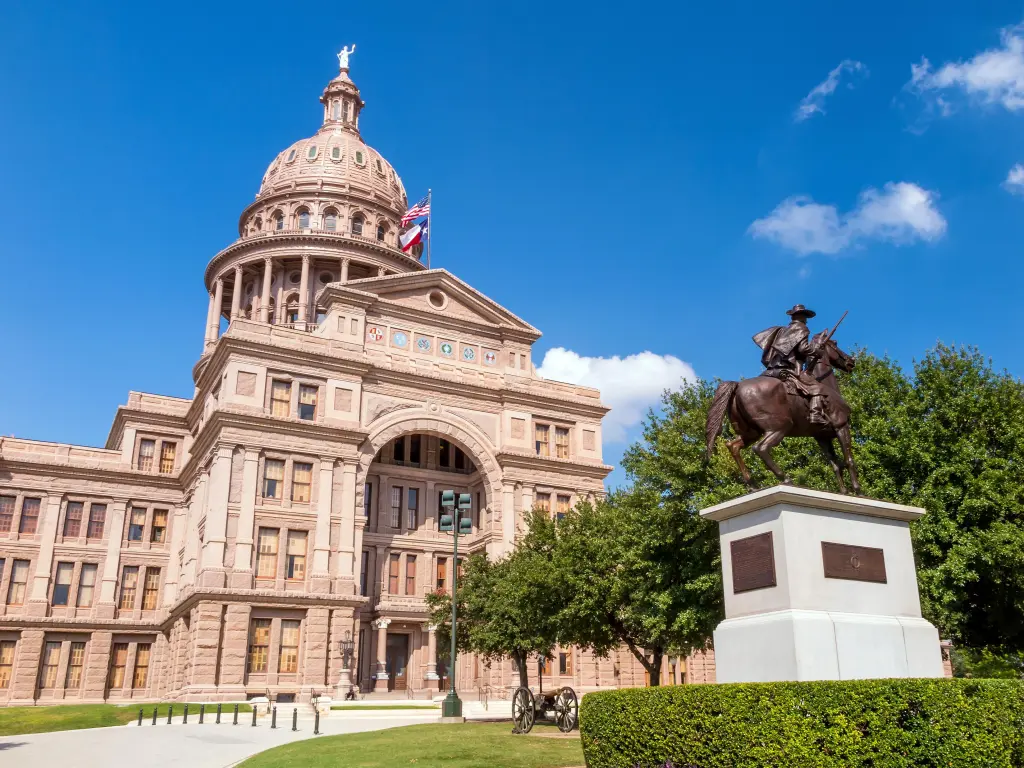
Nestled in this lively city is the Hotel Saint Cecilia, a great place to stay at. Originally built in 1888 as the Miller-Crockett house, this Victorian gem is one of the few remaining along the historic stretch of the Colorado River.
If you are a music lover, you are in for a treat; each room and suite boasts Rega turntables and Geneva sound systems. You can also explore the expansive library of vintage LPs, rock biographies, and poetry anthologies at the hotel.
Located in the historic Travis Heights neighborhood, the hotel is perfectly positioned for you to explore Austin's rich culture. World-famous venues like the Continental Club are nearby, alongside an array of shops, eateries, and entertainment options that capture the essence of Austin's charm.
The "Before I Die Wall Austin TX" is a mere 10-minute walk from the hotel. Also close is the beautiful Auditorium Shores at Town Lake Metropolitan Park, just a 15-minute stroll away.
Our favorite place to stay in Houston
Upon arriving in Houston, the Post Oak Hotel is a premier choice for a luxurious and stress-free stay. This stylish 5-star hotel boasts a prime location that offers stunning rooms with panoramic views of the city.
The hotel's fantastic outdoor swimming pool is perfect for unwinding after a long drive, while its beautifully designed bar is the ideal spot to try your favorite cocktail.
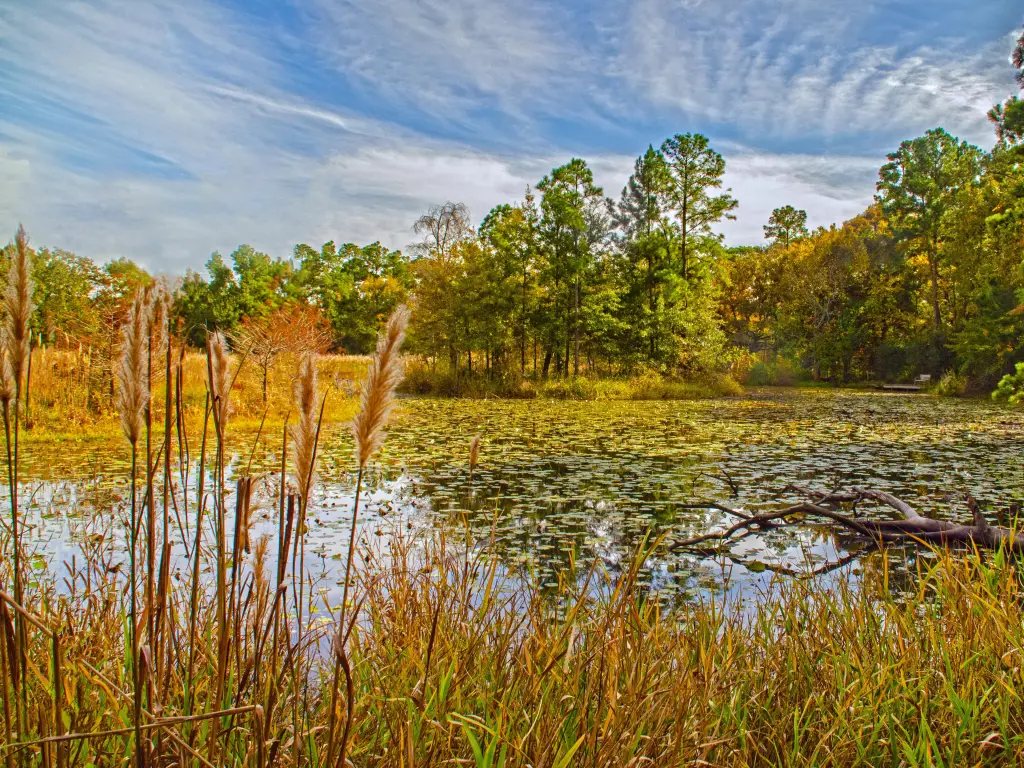
The on-site restaurant serves delicious American cuisine, providing a food experience without leaving the comfort of the hotel.
Conveniently located near some of Houston's top attractions, the Post Oak Hotel is just 1 mile from The Galleria, Houston's premier shopping destination. Similarly, the popular Water Wall is about a mile away.
For nature enthusiasts, the Houston Arboretum and Nature Center, located 1.2 miles from the hotel.
Best time to travel from San Diego to Houston on a road trip
While the road trip from San Diego to Houston can be taken any time of the year thanks to the mild weather on the routes, each season presents different highlights along the way. Below is what to expect throughout the year.
Traveling to Houston from San Diego in summer
During the summer, you'll experience hot and dry conditions on both routes, with temperatures often above 100 degrees Fahrenheit.
Houston offers a slightly cooler but humid environment, with temperatures typically ranging from the mid-80s to mid-90 degrees. Exploring indoor attractions and enjoying early morning or late evening activities are best to avoid peak heat.
The Coronado National Forest and Marfa offer more pleasant temperatures, especially in the evenings. As for events, the Viva Big Bend Music Festival in July on the San Antonio Route is one of the top highlights.
Summer travel on the Austin Route means taking advantage of cooler attractions like White Sands National Park and Carlsbad Caverns National Park.
Traveling to Houston from San Diego in winter
Winter brings milder weather to the San Antonio Route, with daytime temperatures in Houston averaging in the 60s degrees Fahrenheit, occasionally dipping into the 50s or lower during cold fronts. This season is ideal for enjoying the outdoors and exploring the city.
Tucson and Houston's mild winter temperatures make them perfect destinations for holiday events and outdoor festivals. Don't miss the Carlsbad Winter Wine Festival in December.
The Austin Route during winter features mild to cool weather, making it pleasant to explore outdoor attractions and the natural beauty of the parks.
The desert can get colder at night, but daytime temperatures remain comfortable for travel. White Sands and Carlsbad Caverns offer enjoyable winter visits with fewer visitors and special events, like the Gila Bend Butterfield Stage Days in February.
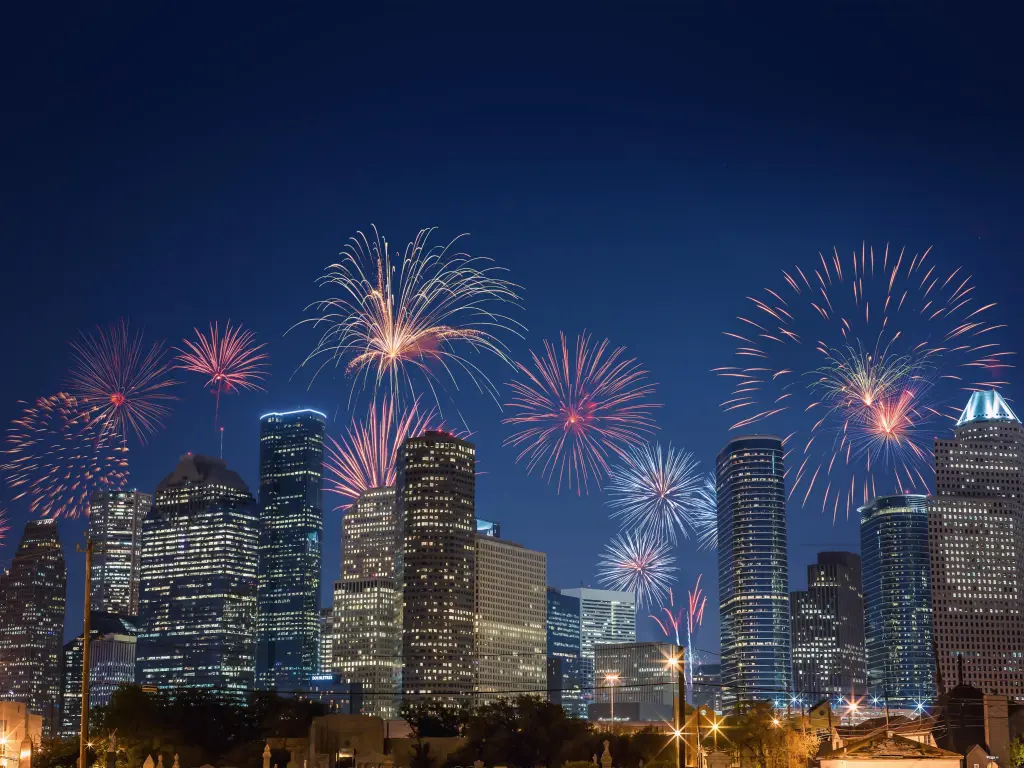
Traveling to Houston from San Diego in the shoulder seasons
The shoulder seasons of spring and fall present the most pleasant weather. These seasons are ideal for outdoor activities, sightseeing, and local festivals. You will also find the Coronado National Forest vibrant with spring wildflowers or fall foliage depending on when you choose to travel.
On the Austin Route, White Sands National Park and Carlsbad Caverns are particularly stunning in fall and spring.
The pleasant weather enhances Austin's outdoor festival scene, including music and food festivals. On the way, don't miss events like the Worldfest Houston in April.
The best things to see and do on a road trip from San Diego to Houston
With so many miles to cover on a San Diego to Houston road trip, it probably won't come as a surprise that there are many things to see and new attractions to discover on both routes.
On Both Routes
Alpine Historical Society Museum: This museum offers a deep dive into the history and culture of Alpine, Texas, showcasing artifacts and stories.
Lions Tigers and Bears: A sanctuary in Alpine, California, that provides a haven for big cats and other exotic animals, offering up-close encounters.
Jacumba Hot Springs, California: A desert oasis in California that offers natural hot springs, spa services, and more.
Imperial Valley Desert Museum: This museum in Ocotillo, California, presents the history and cultures of the Imperial Valley through exhibits and educational programs.
Sonoran Desert National Monument, Maricopa: This monument protects a vast landscape of cactus-filled Sonoran Desert, providing opportunities for hiking, photography, and wildlife viewing.
Sweetwater Wetlands Park: An artificial wetland near Tucson that serves as a wildlife habitat and an educational facility, where you can enjoy bird watching and nature walks.
Picacho Peak State Park: Famous for its distinctive peak, this park offers hiking trails, camping, and historical significance as a Civil War battle site.
Tucson Botanical Gardens: A peaceful oasis in Tucson, Arizona, featuring diverse plant collections, themed gardens, and butterfly exhibits.
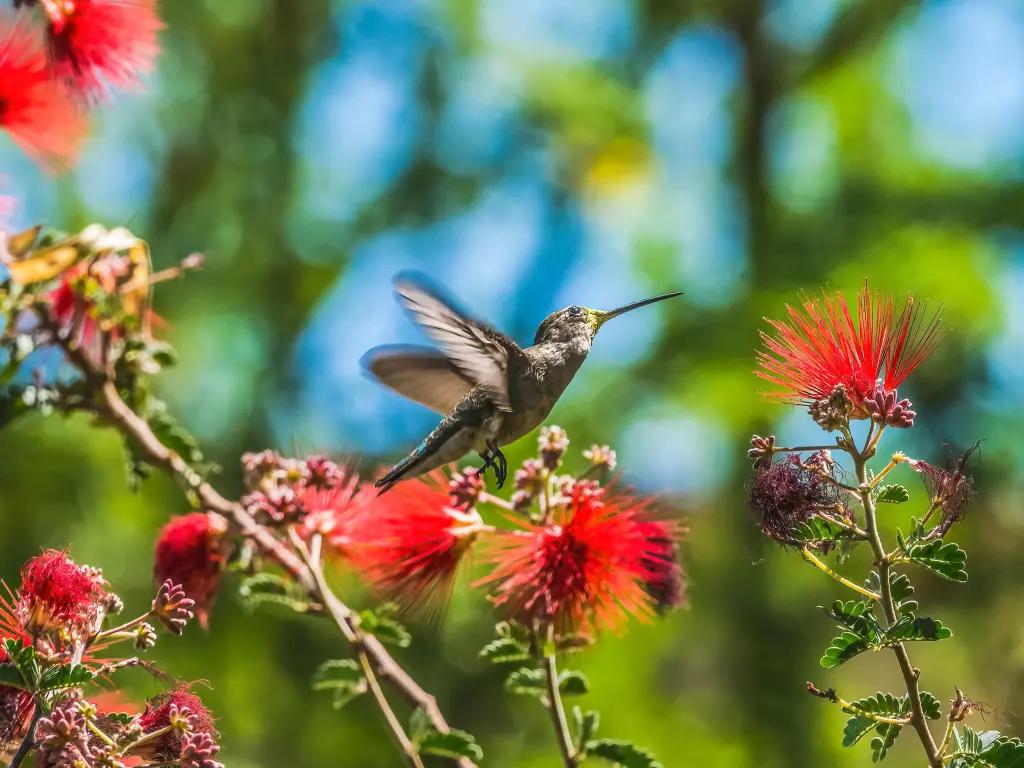
Old Pueblo Archaeology Center: Located in Tucson, this center focuses on preserving archaeological sites and educating the public about the prehistory and archaeology of the region.
Pima Air & Space Museum: This is one of the world's largest non-government-funded aerospace museums, located in Tucson. It showcases over 300 aircraft and spacecraft.
Shakespeare Ghost Town: A preserved ghost town in New Mexico that offers a glimpse into the Wild West's history through guided tours and reenactments.
New Mexico Farm and Ranch Heritage Museum, Las Cruces: This museum captures the 3,000-year history of farming and ranching in New Mexico through interactive exhibits and live demonstrations.
Historic Old Town, Fort Stockton: A historic district in Fort Stockton, offering a look into the past with its preserved buildings and local history exhibits.
Paisano Pete, Fort Stockton: A giant roadside statue in Fort Stockton, Texas, representing one of the world's largest roadrunners, offering a quirky photo opportunity.
Eaton Hill Nature Center and Preserve: Located in Sonora, Texas, this nature center and preserve offers trails for hiking and bird watching.
Ozona Museum, Ozona: This museum highlights the history of Crockett County and the Texas Hill Country, featuring artifacts and stories from the region.
Old Ice House Ranch Museum: Located in Ozona, Texas, this museum tells the story of local ranching history and heritage through exhibits and collections.
On San Antonio Route
Franklin Mountains State Park, El Paso: A park offering breathtaking views, hiking trails, and rock climbing opportunities, set within the rugged beauty of the Franklin Mountains.
Clark Hotel Museum: Located in Van Horn, Texas, this museum is housed in a historic hotel and displays local history, including ranching and mining artifacts.
The Chinati Foundation: A contemporary art museum in Marfa, Texas, founded by artist Donald Judd, focusing on large-scale installations and minimalist art.
Museum of The Big Bend: Situated in Alpine, Texas, this museum showcases the natural and human history of the Big Bend region through exhibits and collections.
Cascade Caverns, Boerne: A fascinating natural cavern in Boerne, Texas, known for its live formations, cool temperatures, and unique ecosystem.
The Alamo: The iconic historic site in San Antonio, Texas, where visitors can learn about the pivotal battle for Texan independence in 1836.
Buc-ee's, Luling: A massive travel center known for its clean restrooms, wide variety of snacks, and the iconic beaver mascot, offering a unique Texas road trip experience.
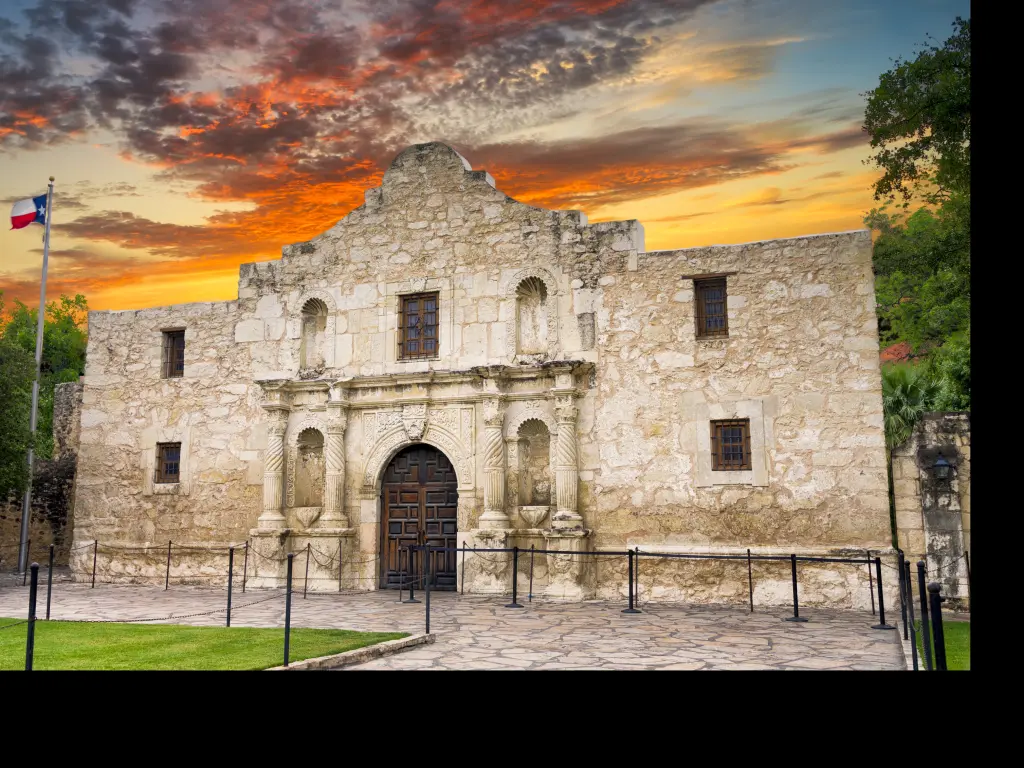
On the Austin Route
Interdune Boardwalk, White Sands National Park: Located in White Sands National Park, this boardwalk offers easy access to explore the gypsum sand dunes and learn about the unique ecosystem.
Living Desert Zoo and Gardens State Park: A state park in Carlsbad, New Mexico, showcasing the Chihuahuan Desert's flora and fauna.
Carlsbad Caverns National Park: Renowned for its vast underground network of more than 100 limestone caves, including the majestic Big Room, one of the largest natural cave chambers in the world.
Rattlesnake Springs: A hidden oasis in Carlsbad, New Mexico, known for its wildlife viewing opportunities, particularly for birdwatchers.
Fredericksburg Historic District: A charming district in Fredericksburg, Texas, known for its German heritage, shopping, dining, and historical sites.
Barton Creek Habitat Preserve: Near Austin, Texas, this preserve offers protected habitats for endangered species and miles of trails for hiking and nature observation.
Cathedral of Junk: A unique, whimsical structure in Austin, Texas, built entirely from discarded items and junk that's a must-see.


